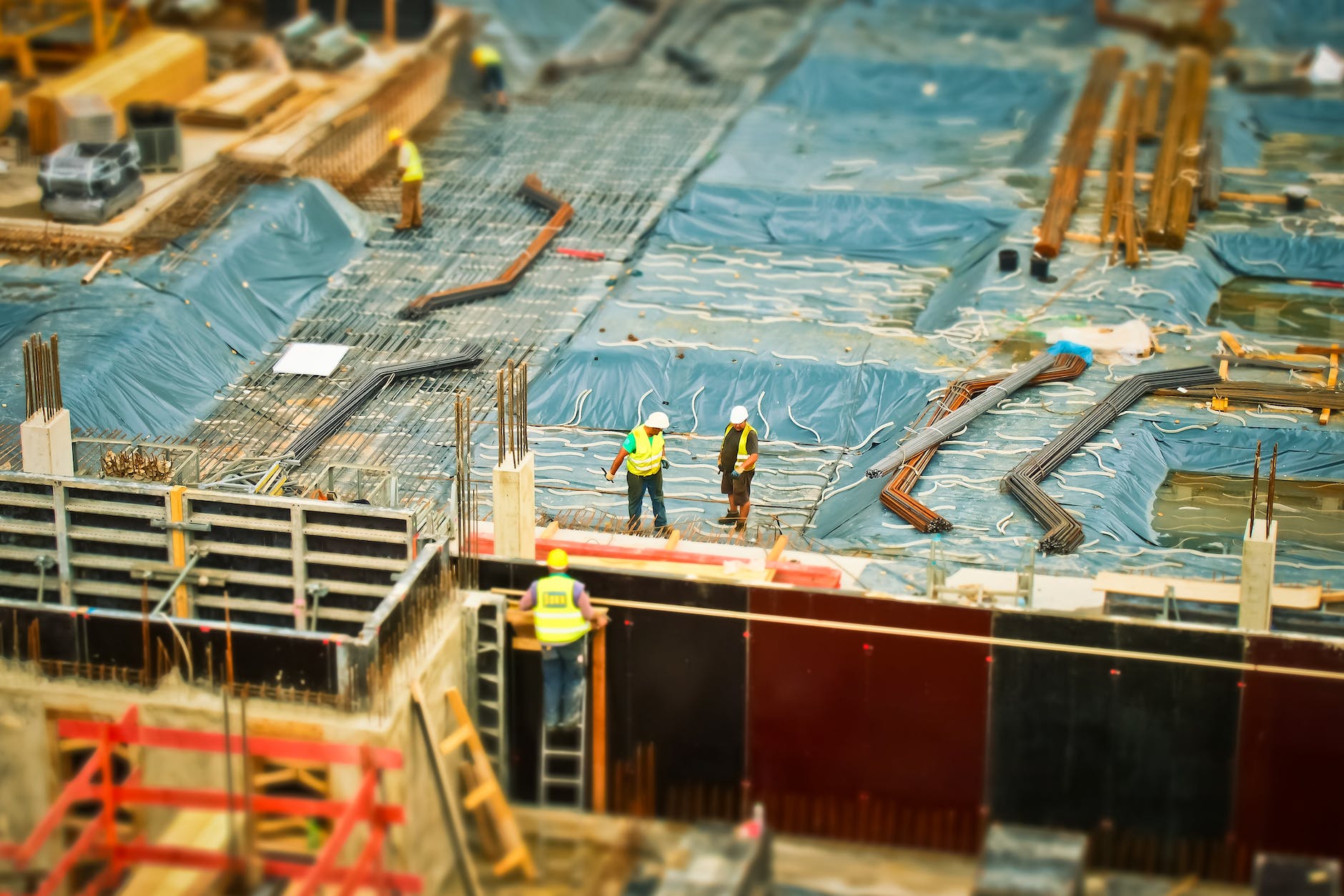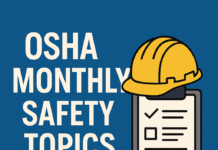
OSHA Construction Site Requirements: Ensuring Safety in Every Step
Introduction
Construction sites are dynamic environments with numerous potential hazards, making the implementation of safety regulations paramount. The Occupational Safety and Health Administration (OSHA) plays a crucial role in ensuring the well-being of workers in these settings. This article delves into OSHA construction site requirements, offering a comprehensive guide to navigating the intricate landscape of safety protocols.
Understanding OSHA Construction Site Requirements
When it comes to construction safety, OSHA sets the gold standard. The agency provides guidelines that encompass various aspects of construction site safety. OSHA requirements are categorized into different sections, each focusing on a specific facet of ensuring a secure working environment.
General Safety Standards
The foundation of OSHA regulations lies in general safety standards. Personal Protective Equipment (PPE), hazard communication, and fall protection are key components. Workers must wear appropriate PPE, employers must communicate potential hazards, and measures to prevent falls must be in place.
Electrical Safety
Construction sites often involve the extensive use of electrical equipment. OSHA mandates guidelines for the safe installation and use of electrical systems on construction sites. Regular inspections are crucial to identifying and rectifying potential electrical hazards.
Machine Guarding and Equipment Safety
Machinery accidents are a significant concern in construction. OSHA requires proper guarding of machinery to prevent accidents, and regular equipment maintenance is essential to ensuring safe operation.
Scaffolding and Ladder Safety
Scaffolding accidents are among the leading causes of injuries on construction sites. OSHA has specific regulations governing the use of scaffolding to minimize risks. Additionally, safe practices for ladder usage must be adhered to at all times.
Excavation and Trenching
Construction often involves excavation work, which poses risks of cave-ins. OSHA mandates specific requirements to ensure safe excavation practices, emphasizing prevention strategies for potential hazards.
Fire Prevention and Emergency Response
Fire safety is a critical aspect of OSHA construction site requirements. Guidelines for fire prevention and emergency response procedures must be strictly followed to mitigate the impact of unforeseen incidents.
Training and Education
Ensuring the workforce is well-trained in safety protocols is a fundamental OSHA requirement. Construction companies must implement comprehensive training programs to educate workers on potential hazards and safe practices.
Recordkeeping and Reporting
Accurate recordkeeping of incidents is a vital aspect of OSHA compliance. Construction companies must maintain detailed records of accidents and injuries and report them to OSHA as required by regulations.
The Occupational Safety and Health Administration (OSHA) in the United States establishes and enforces safety and health regulations to ensure the well-being of workers in various industries, including construction. Here are some key OSHA construction site requirements:- Fall Protection: Construction workers must be protected from falls if they are working at a height of six feet or more. This may involve the use of guardrails, safety nets, or personal fall arrest systems.
- Hazard Communication: Employers must have a hazard communication program in place to inform and train workers about hazardous chemicals they may be exposed to. This includes proper labeling of chemicals and providing Material Safety Data Sheets (MSDS).
- Scaffolding Safety: OSHA has specific requirements for the construction and use of scaffolding, including proper construction, inspection, and use. This is crucial to prevent falls and ensure the stability of scaffolds.
- Electrical Safety: Construction sites often involve electrical work, and OSHA has regulations to ensure the safety of workers. This includes proper wiring methods, use of ground fault circuit interrupters (GFCIs), and protection against electric shock.
- Personal Protective Equipment (PPE): Employers are required to assess the workplace for potential hazards and provide appropriate PPE, such as hard hats, safety glasses, gloves, and respiratory protection, to protect workers from injury or illness.
- Excavation and Trenching Safety: OSHA has specific regulations regarding the safety of workers involved in excavation and trenching activities. This includes protective systems, access and egress, and regular inspections.
- Machine Guarding: Construction sites often use various types of machinery. OSHA requires proper guarding of equipment to protect workers from moving parts that could cause injury.
- Respiratory Protection: If workers are exposed to airborne contaminants or insufficient oxygen levels, employers must provide respiratory protection and ensure that it is properly used and maintained.
- Recordkeeping and Reporting: Employers are required to keep records of work-related injuries and illnesses and report serious incidents to OSHA. This information helps OSHA identify trends and areas where additional safety measures may be necessary.
- Training and Education: Employers are responsible for providing training and education to workers on safety and health hazards specific to their job duties. This includes training on the proper use of equipment, emergency procedures, and recognizing and avoiding hazards.
It's important to note that these are general guidelines, and specific requirements may vary based on the nature of the construction work. Employers are encouraged to consult OSHA regulations (29 CFR 1926 for construction) and seek professional advice to ensure compliance with current standards.Enforcement of OSHA Standards
OSHA standards are not mere suggestions; they are enforceable regulations. Non-compliance can lead to severe consequences, including fines and penalties. OSHA conducts regular inspections to ensure that construction companies adhere to these standards.
Recent Developments in OSHA Construction Regulations
Staying abreast of the latest developments in OSHA regulations is crucial for construction companies. OSHA periodically updates its standards to address emerging risks and improve overall safety. Construction businesses must adapt to these changes to maintain compliance.
Challenges Faced by Construction Companies
Meeting OSHA requirements is not without its challenges. Construction companies often grapple with obstacles such as tight deadlines, budget constraints, and evolving project scopes. Overcoming these challenges requires strategic planning and a commitment to safety.
Benefits of OSHA Compliance
While meeting OSHA standards may seem like an additional burden, the benefits far outweigh the effort. OSHA compliance leads to improved safety for workers, reducing accidents and injuries. Furthermore, adherence to OSHA standards enhances a company’s reputation, attracting clients who prioritize safety.
Conclusion
In conclusion, OSHA construction site requirements are the backbone of a safe and secure work environment in the construction industry. Prioritizing safety not only ensures the well-being of workers but also contributes to the overall success and reputation of construction companies. By understanding and adhering to OSHA regulations, businesses can create a culture of safety that permeates every aspect of their operations.
OSHA Safety Officer Certification
OSHA Safety Manager Requirements
Frequently Asked Questions
- Is OSHA compliance mandatory for all construction companies?
- Yes, OSHA compliance is mandatory for all construction companies to ensure the safety of workers.
- What are the consequences of non-compliance with OSHA standards?
- Non-compliance can result in fines, penalties, and potential legal action against the construction company.
- How often does OSHA conduct inspections on construction sites?
- OSHA conducts inspections regularly, with the frequency depending on factors such as the industry’s risk level and previous compliance history.
- Are there specific OSHA regulations for small construction businesses?
- OSHA standards apply to all construction businesses, regardless of size. However, there may be variations in requirements based on the scale of operations.
- What resources are available to help construction companies understand and implement OSHA regulations?
- OSHA provides educational resources, training programs, and consultation services to assist construction companies in understanding and implementing regulations.





















